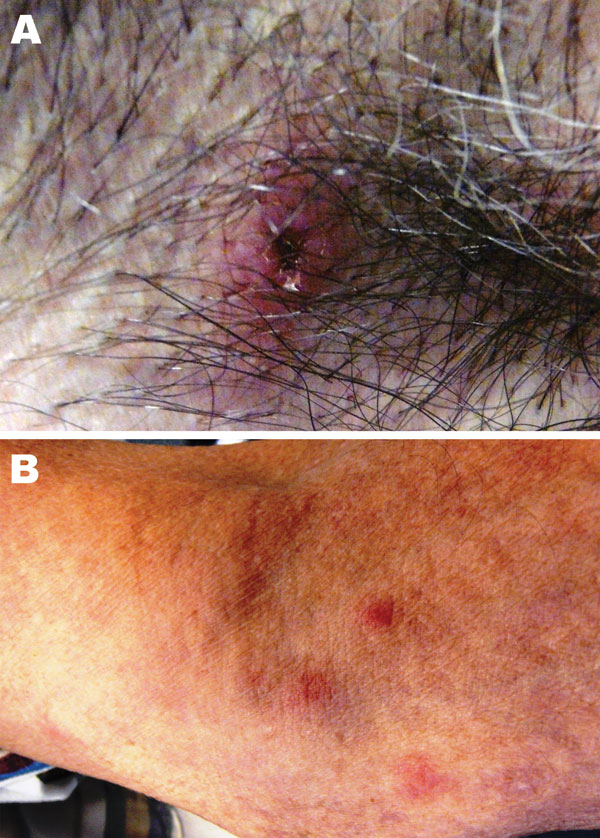Volume 17, Number 5—May 2011
Dispatch
Rickettsia rickettsii Transmission by a Lone Star Tick, North Carolina
Figure

Figure. Images of lesion in the patient caused by bite from lone star tick. A) Erythematous circular lesion in right armpit at site of tick bite with induration and a necrotic center. B) Maculopapular rash involving the inferior portion of the arm. Source: Julie M. Bradley.
Page created: August 14, 2011
Page updated: August 14, 2011
Page reviewed: August 14, 2011
The conclusions, findings, and opinions expressed by authors contributing to this journal do not necessarily reflect the official position of the U.S. Department of Health and Human Services, the Public Health Service, the Centers for Disease Control and Prevention, or the authors' affiliated institutions. Use of trade names is for identification only and does not imply endorsement by any of the groups named above.